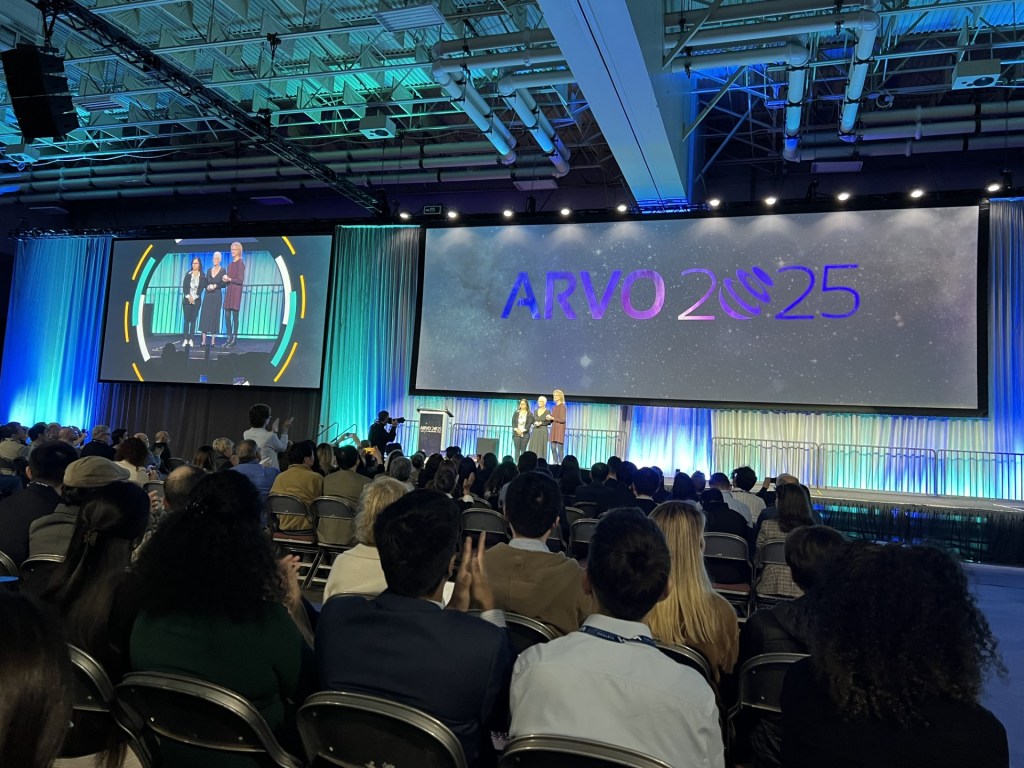Timothy T. Xu, MD
Mayo Clinic, Rochester, MN
Dr. Cynthia Owsley and Dr. Christine Curcio were honored with the ARVO 2025 Proctor Medal Award for their contributions to earlier detection of AMD via the Alabama Study of Early Age-related Macular Degeneration (ALSTAR2) study. The cornerstone of Dr. Owsley and Dr. Curcio’s work is rod-mediated dark adaptation (RMDA), which measures how quickly rod photoreceptors regain sensitivity after bright light exposure. RMDA is now recognized as an early biomarker of AMD, preceding changes in cone function, visual acuity, or contrast sensitivity. RDMA testing at 5° eccentricity (RMDA5) in particular enables earlier disease identification and informs clinical trial design and preventive strategies.

Drs. Owsley and Curcio elucidated the retina’s structural changes underlying delayed RMDA. Their work demonstrated that while foveal cones are preserved in early AMD, perifoveal rods are lost early, explaining the functional vulnerability captured by RMDA. Published by their team in 1993, advanced mapping of photoreceptor topography revealed a dense ring of rods encircling the fovea, an area critical in AMD pathology and the target for RMDA5 testing. Their research also emphasized the retina’s high metabolic demand and the degradative load placed on the RPE by rods. High-resolution OCT studies demonstrated selective thinning of the IZ, signaling early photoreceptor-RPE disruption.
![]()
Another major histologic correlate of RMDA dysfunction is the presence of subretinal drusenoid deposits, which were associated with significant RMDA delays and represent an important structural biomarker of AMD risk. Key findings included delayed RMDA in eyes with normal fundus appearance may predict future AMD onset. Moreover, RMDA5 was the only functional measure significantly worse in early AMD eyes than in normal eyes. Drs. Owsley and Curcio emphasized optimizing the RMDA test for efficiency, linking RMDA outcomes to patient-reported visual function, and leveraging retinal carotenoid imaging as a nutritional and genetic biomarker. Lastly, they highlighted innovative imaging and precision medicine strategies to prevent AMD before irreversible damage like neovascularization or geographic atrophy occurs.
![]()
Overall, Drs. Owsley and Curcio’s contributions have spanned four decades and influenced current understanding of AMD detection and progression. Their commitment to open science, mentorship, and cross-disciplinary collaboration has shaped generations of researchers and clinicians. Their work demonstrates how basic science, when combined with translational tools and patient-centered metrics, can improve patient care.